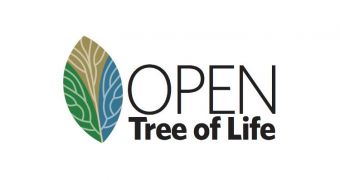Experts are currently analyzing the requirements of assembling the world's most complex and complete tree of life, to feature everything researchers know about all living things. It would also include the interactions between all known species and their ecosystems.
Understanding these relations is extremely important for ecology and conservation. If scientists are able to compile such a large dataset, they would then use it as a basis for multiple studies, and continuously add new data to it.
For this purpose, investigators are currently analyzing the methods that could enable automatic updates of this dataset. A series of analytical and visualization tools will be necessary to study its contents as well, so this is another area of focus.
Famed naturalist Charles Darwin – who formulated the theory of evolution – drew the first sketches of the world's tree of life, and scientists have been following in his footsteps for more than 150 years. There are currently many such databases around the globe, but not a single, centralized one.
The most difficult to decipher aspect of these trees is their branching patterns. What Darwin showed was that all species share common ancestors. However, many of these species have long since disappeared. Additionally, entire lineages were wiped out during extinction events.
Tracing back the origins of all species on Earth is a monumental task, but not an impossible one. The more complete a tree of life is, the more likely it is to help investigators in this quest, and vice versa.
Three separate teams of researchers are working with a $13 million grant secured from the Assembling, Visualizing, and Analyzing the Tree of Life (AVAToL) program, which is run by the US National Science Foundation (NSF).
Their purpose is to create a centralized database – and related systems – for visualizing all branches in the tree of life in a centralized manner. “The AVAToL awards are an exciting new direction for an area that's a foundation of much of biology,” Alan Townsend explains.
“That's critical to understanding a changing relationship between human society and Earth's biodiversity,” adds the expert, who is the director of the NSF Division of Environmental Biology. It could also help comparative biology studies, Townsend adds.
“Researchers will be able to go online and compare their trees to others that have already been published, or download trees for further study. They'll also be able to expand the tree, filling in the missing branches and placing newly named or discovered species among their relatives,” NSF reports.
“The goal is to incorporate new trees automatically, so the complete tree can be continuously updated,” a statement from the Foundation concludes.

 14 DAY TRIAL //
14 DAY TRIAL //